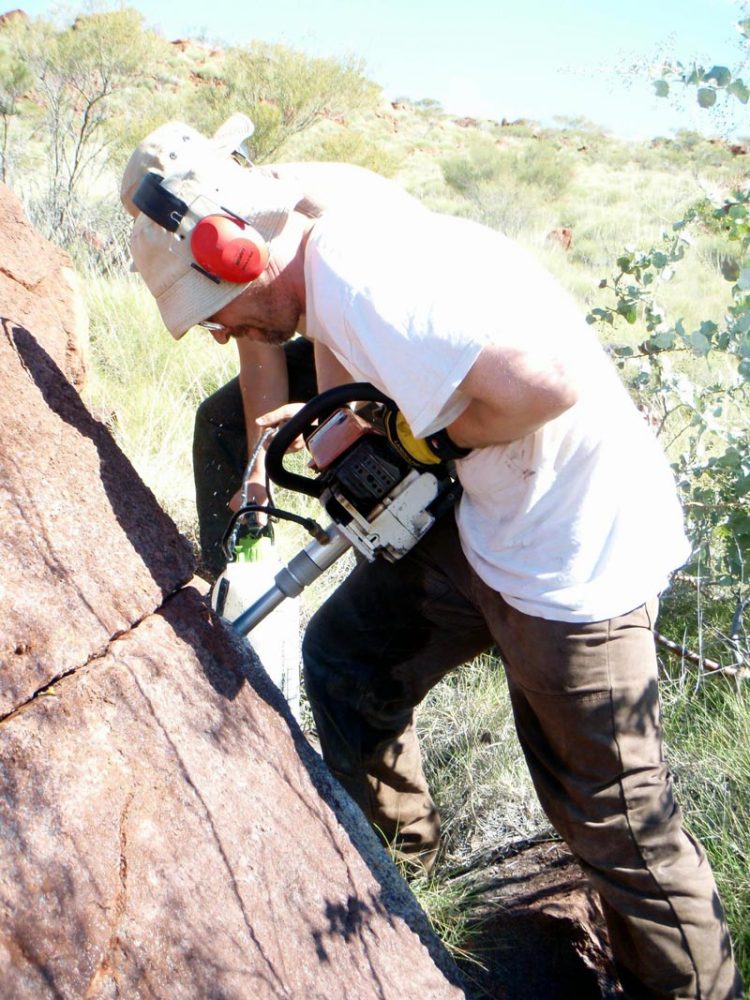Clues to the Earth's ancient core

Aleksey Smirnov drills into an outcrop in Australia's Widgiemooltha dike swarm. Credit: Aleksey Smirnov, Michigan Tech
Now, a geophysicist at Michigan Technological University has unlocked clues trapped in the magnetic signatures of mineral grains in those rocks.
These clues will help clear up the murky history of the Earth's early core.
The journal Earth and Planetary Science Letters published a paper on the subject earlier this year. Aleksey Smirnov, an associate professor of geophysics and adjunct associate professor of physics at Michigan Tech, led the study.
The work took him Down Under, where he drilled into rock outcrops in Australia's Widgiemooltha dike swarm that are more than two billion years old. Studying rocks this old–and extracting data from them–is tricky but helps unravel the core's mysteries.
However, Smirnov's findings created their own mystery: the magnetic readings were significantly larger than anticipated. This could have implications for early life on earth.
###
To learn more about Smirnov's research, read the full story about his work here: http://www.
Media Contact
All latest news from the category: Earth Sciences
Earth Sciences (also referred to as Geosciences), which deals with basic issues surrounding our planet, plays a vital role in the area of energy and raw materials supply.
Earth Sciences comprises subjects such as geology, geography, geological informatics, paleontology, mineralogy, petrography, crystallography, geophysics, geodesy, glaciology, cartography, photogrammetry, meteorology and seismology, early-warning systems, earthquake research and polar research.
Newest articles

Properties of new materials for microchips
… can now be measured well. Reseachers of Delft University of Technology demonstrated measuring performance properties of ultrathin silicon membranes. Making ever smaller and more powerful chips requires new ultrathin…

Floating solar’s potential
… to support sustainable development by addressing climate, water, and energy goals holistically. A new study published this week in Nature Energy raises the potential for floating solar photovoltaics (FPV)…

Skyrmions move at record speeds
… a step towards the computing of the future. An international research team led by scientists from the CNRS1 has discovered that the magnetic nanobubbles2 known as skyrmions can be…




















